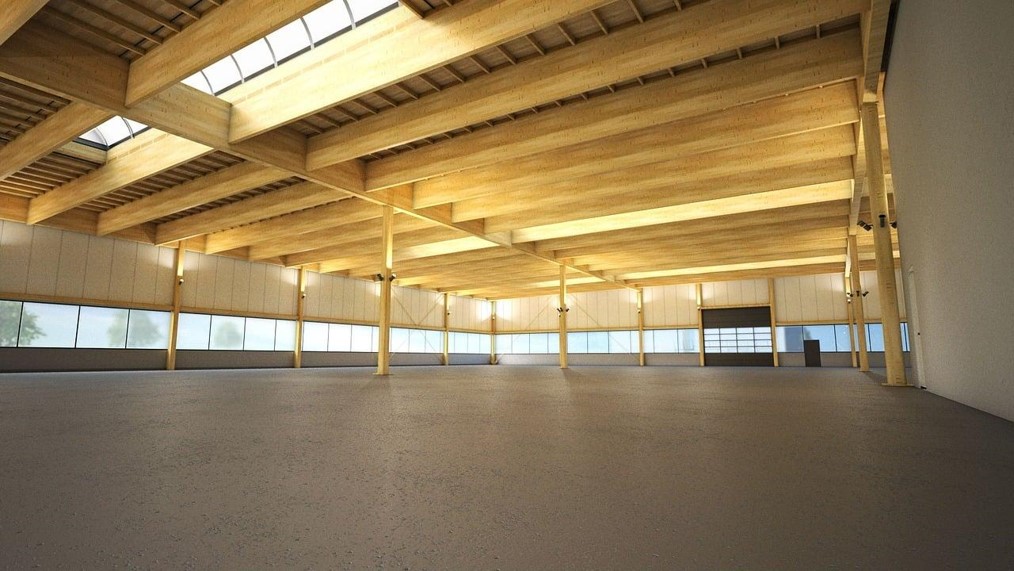

MakMax Plus
Introduction of measures to prevent condensation at factories: What are the optimal countermeasures as seen from the causes of condensation?
2020.10.05
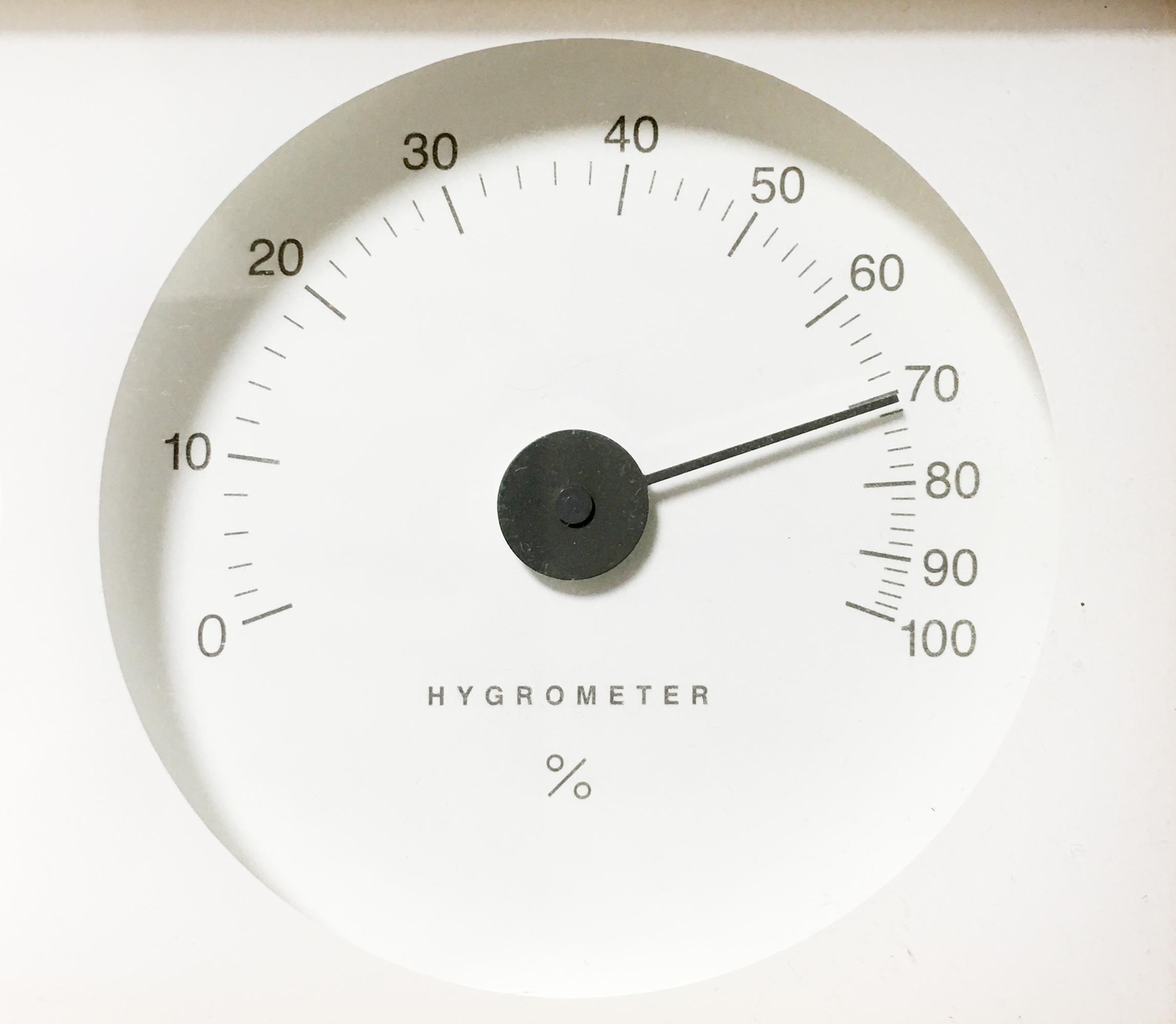
In rainy and humid Japan, condensation and moisture problems are no stranger to anyone. Warehouses, factories, and truck terminals are particularly prone to condensation, and various problems plague all concerned.
Why is condensation so likely to occur in warehouses? What are the causes and what are the countermeasures? Are there any warehouses that are less prone to condensation or less susceptible to condensation?
This is explained in this article.
Table of Contents
1 Trouble caused by condensation in the warehouse
1-1 Mold/odor
1-2 Mites and insect pests
1-3 Rust/Corrosion
1-4 Health Effects
2 Causes of condensation
3 Why are warehouses prone to condensation?
4 How to prevent condensation in the warehouse
5 Excellent functionality and a wide range of options make the “Tent Warehouse” effective for condensation problems.
5-1 Photocatalyst prevents temperature rise in warehouses
5-2 Abundant insulation and ventilation options
5-3 Creating a comfortable space with a ceiling fan
5-4 Walls and roofs are rust-resistant
5-5 Low cost and short construction period
5-6 Tent Warehouses with Various Other Benefits
6 For consultation on tent warehouses, contact the reliable Taiyo Kogyo: a one-stop shop.
7 Conclusion
Problems caused by condensation in the warehouse

Although condensation droplets alone can have a variety of harmful effects, they are not the only trouble that condensation can cause. Condensation can cause the following problems, which can adversely affect stored items, the environment, and workers.
- Mold/odor
- mite
- Rust/Corrosion
- Health Effects
Mold/odor

Moisture from condensation can cause mold to form in the warehouse. In addition to damaging stored goods and equipment, mold can also be a source of foul odors and significantly deteriorate the warehouse environment.
Mites/Harmful insects
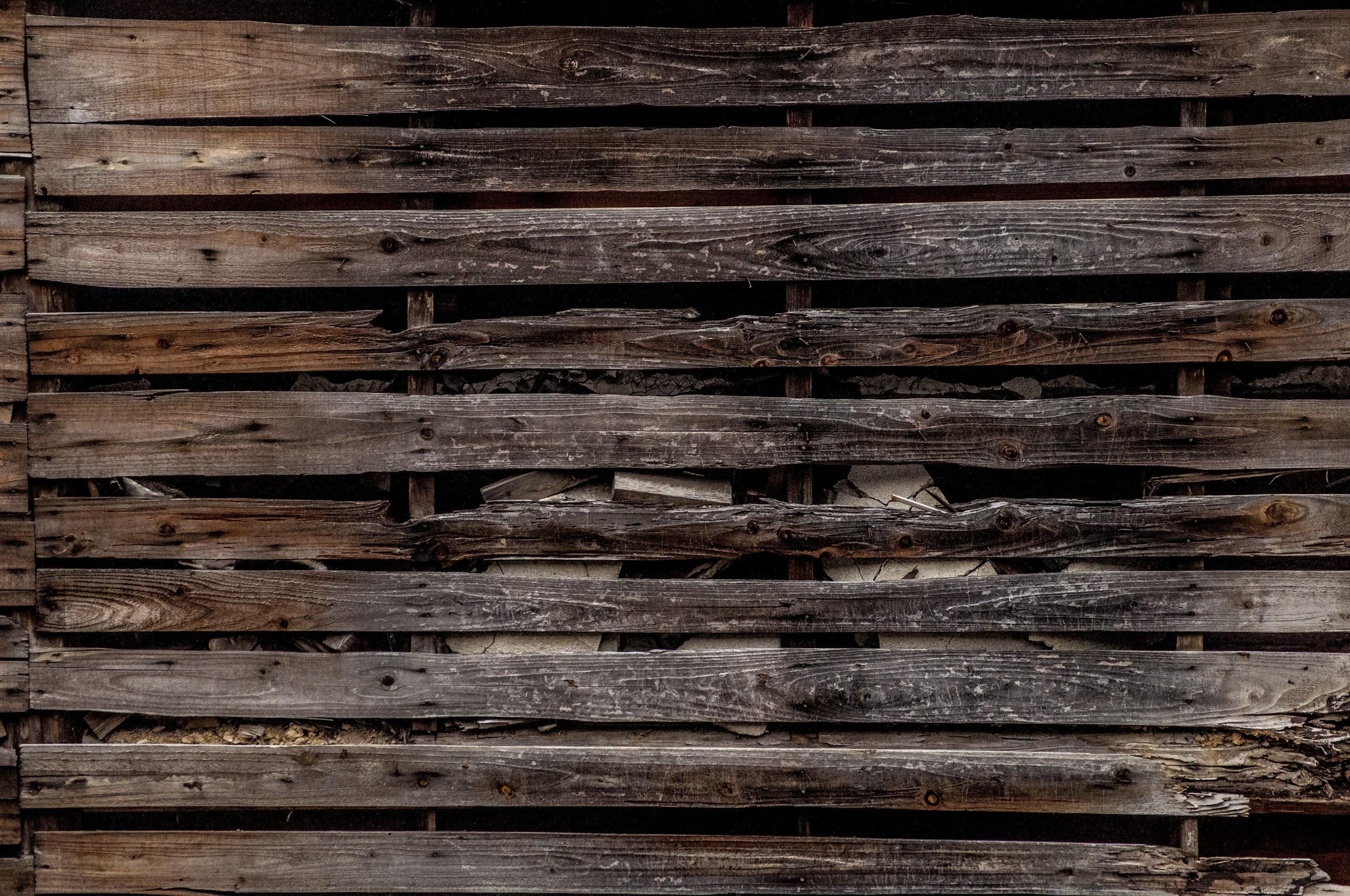
Moisture creates a comfortable habitat not only for mold, but also for dust mites. Mites are particularly fond of cardboard and fabrics, where they multiply explosively. In addition to mites, cockroaches and other pests are attracted to humidity.
Rust/Corrosion

Condensation can cause rust on metal parts of buildings and equipment, and corrosion on roofs and walls. Warehouses with a large area require time-consuming and costly maintenance for even the slightest damage.
Health Effects
Condensation not only harms the building and stored items, but also the people in the warehouse. Mold can cause pneumonia as well as allergies. The same goes for dust mites. In addition, an uncomfortable, humid environment can greatly reduce the efficiency of work in a warehouse.
Causes of condensation
Condensation occurs when water vapor in the air cools and forms water droplets. Air has a “saturated vapor content,” which is the limit for the amount of water vapor it can contain, and the lower the temperature, the lower the saturated vapor content. The main cause of air cooling is the difference between indoor and outdoor temperatures. When the warm, moist air inside a room is cooled by contact with walls and windows, the saturated water vapor content drops, and the overflowing water vapor turns into water droplets, causing condensation. Humidity is often thought of as increasing in the summer, but condensation tends to occur in the rainy season when humidity is high and in the winter when temperatures are low.
Why are warehouses prone to condensation?

Why are warehouses more prone to condensation than other buildings? The cause lies in their structure and equipment. The main causes are as follows
- Due to the large space with few partitions and high ceilings, and inefficient air conditioning.
- Because there are few or no windows that can be opened, making it difficult to ventilate and keep moisture out.
- Because concrete floors and walls absorb, accumulate, and expel moisture.
- Floors and equipment are easily cooled, and there are many boundaries between the cold and the warmth of the indoor air.
- The walls and roof are thin and easily affected by outside temperatures, and there are many boundaries between indoor and outdoor temperatures.
While both of these seem difficult to avoid given the role of the building as a warehouse, there are some countermeasures that can be taken.
How to prevent condensation in warehouses
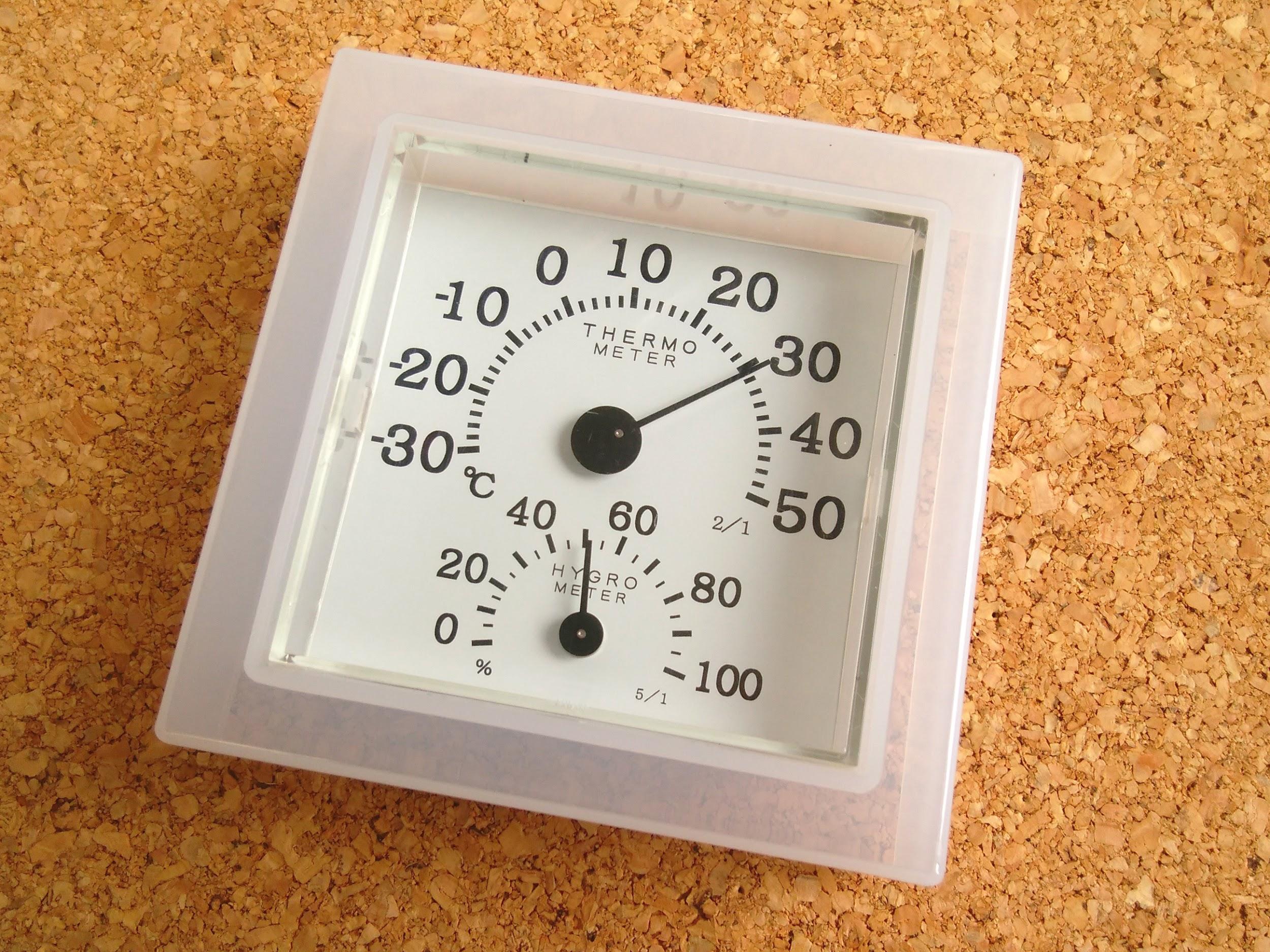
There are three main points to prevent condensation in warehouses.
- Use equipment and windows for adequate ventilation.
- Create air flow and do not stagnate
- Reduce impact of outside temperatures on roofs and walls
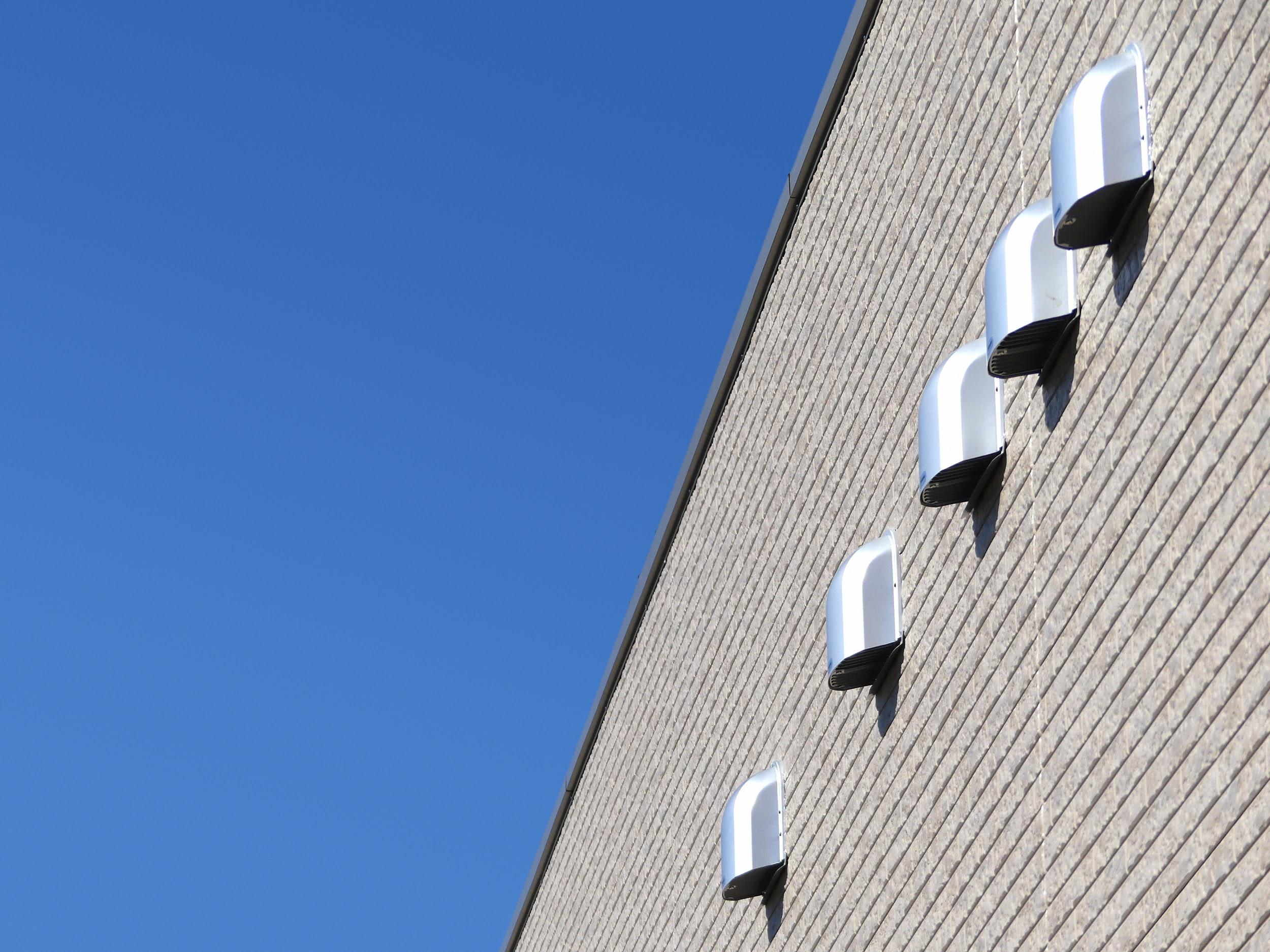
Condensation can be prevented if humidity is allowed to escape through proper ventilation systems and by opening windows and other openings. Condensation is also less likely to occur because air is prevented from cooling in one place if there is no air stagnation. If roofs and walls are less susceptible to the direct influence of outside temperatures, cold temperature differences will not occur, creating an indoor environment that is less prone to condensation.
That’s a given.”
I’m in trouble because I can’t do that.”
Many people may think that this is a good idea. We recommend the “Tent Warehouse” solution for such people.
Superior functionality and a wide range of options make the "Tent Warehouse" an effective solution for condensation problems.
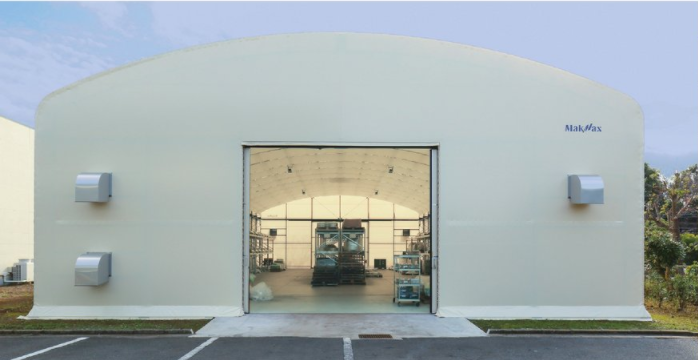
A tent warehouse is, as the name implies, a tent-like warehouse whose roof and walls are constructed of a fabric called “membrane material. Although called a “tent,” it is not a temporary structure. Rather, they boast superior performance to conventional warehouses through the use of special membranes that excel in durability and functionality.
Due to location and wind direction,Condensation is difficult to prevent completely.However, the tent warehouse can be used in conjunction with anti-condensation items thatThe occurrence of this problem can be greatly reduced.The following is a list of the most common problems with the
Solving problems while achieving both “low cost” and “short construction period”.get close toSolution. Below is an example of the optionsand features of tent warehousesWe would like to introduce the following
- Titanium dioxide photocatalytic coating film
- Extensive insulation and ventilation facilities
- Large ceiling fans (ceiling-mounted type)
- Rust-resistant walls and roofs
- Low cost and short construction period
Photocatalyst prevents temperature rise in warehouse
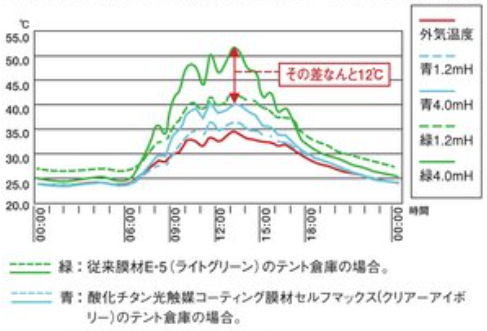
By using a specially processed membrane material called “titanium dioxide photocatalytic coating membrane” on roofs and walls, the reflectance of solar radiation can be dramatically increased. This reduces the rise in temperature inside the warehouse and the risk of humidity buildup and cold temperature differences.
Extensive insulation and ventilation options
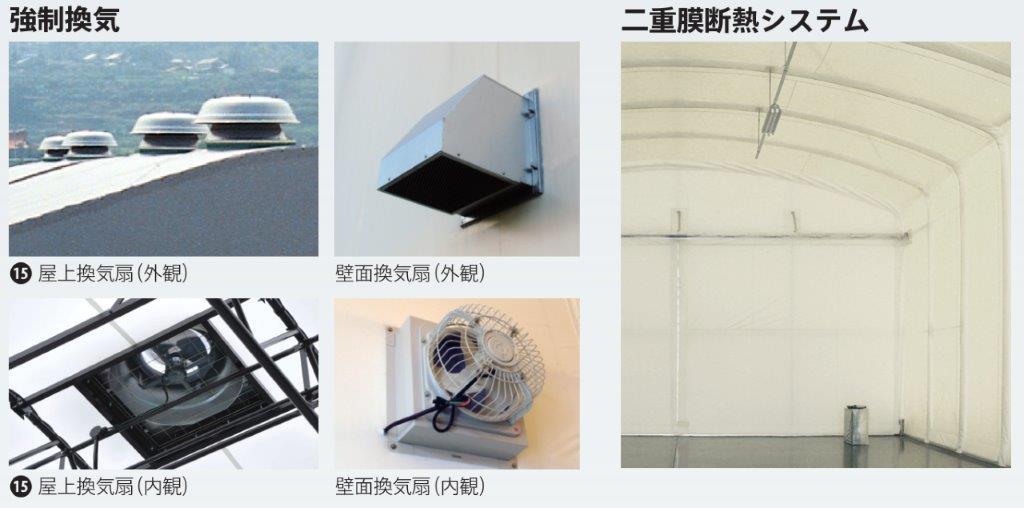
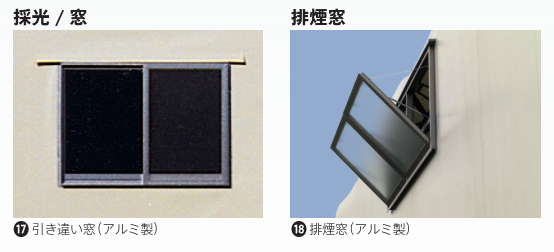
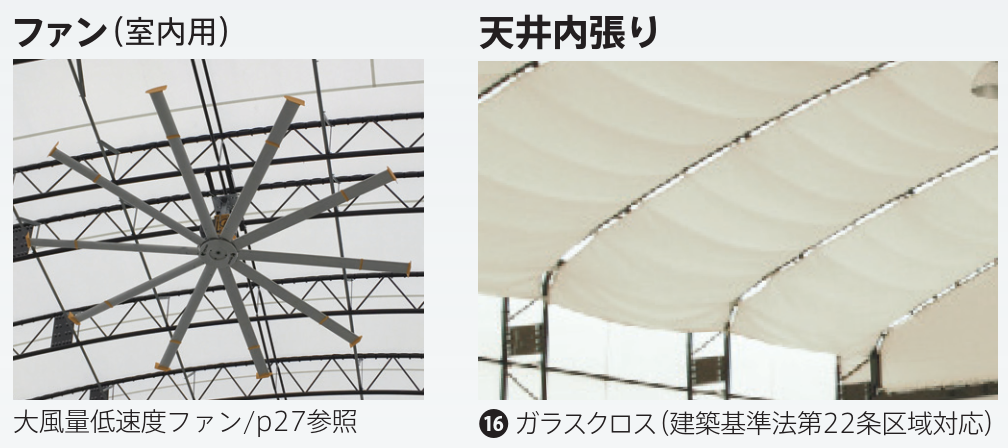
Tent warehouses offer a wide variety of insulation and ventilation options to create a comfortable environment for a variety of environments and uses. By creating a system that allows air to circulate within the warehouse, tent warehouses can reduce the occurrence of condensation. It is also possible to retrofit the system, although conditions do exist.
Create a comfortable space with ceiling fans
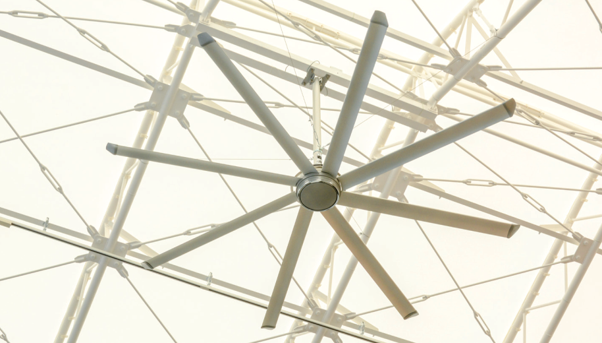
High-airflow, low-speed fans are installed in the ceiling to force air circulation, creating an airflow that reaches every corner of the large space in the warehouse. Originally intended to improve the working environment by increasing air conditioning efficiency and lowering the temperature at which the user feels the air, it can also reduce the risk of condensation by preventing moisture retention. It also helps reduce unpleasant odors.
Rust-resistant walls and roofs
Membrane materials used for the roofs and walls of tent warehouses are not made of metal, so even in the unlikely event of condensation, the membrane materials will not rust. Structural members can also be made rust-resistant through paint specifications. In the event of deterioration due to other causes, maintenance can be easily performed with only partial repairs, thus reducing maintenance costs. Periodic diagnostic services for membrane material deterioration are also available, providing peace of mind against deterioration over time.
Low cost and short construction period
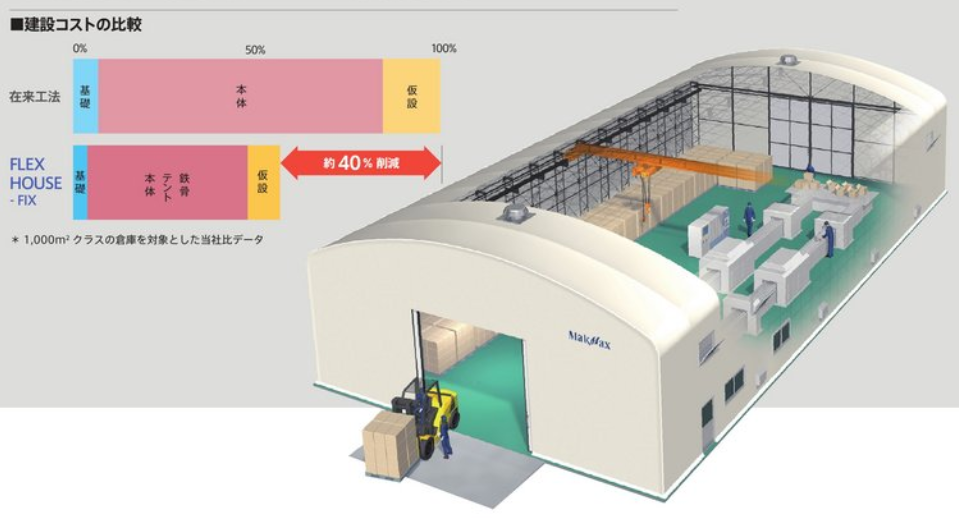
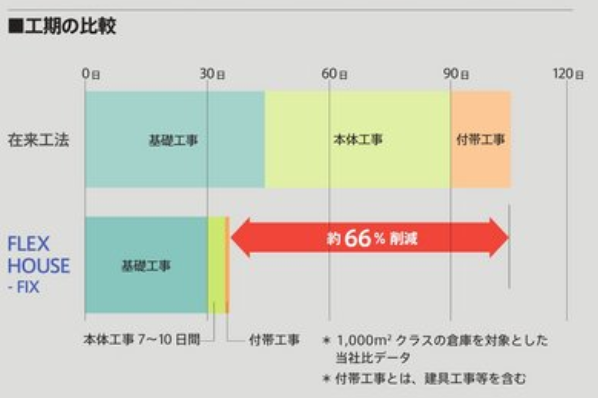
Tent warehouses can be built at a much lower cost and in a much shorter construction period than conventional warehouses. Costs can be reduced by about 40%, and the construction period can be shortened by as much as 66%.
Tent warehouses with many other advantages
Tent warehouses offer a variety of other functionalities in addition to those listed above, providing superior performance in any environment or application. The following are just some of the benefits
- High lighting and brightness in the warehouse to save electricity.
- Wide range of sizes and functionalities for various applications
- Flexible, lightweight, and resistant to earthquakes, minimizing damage in the event of a fall.
- The “Dual Membrane System” can also function as a temperature-controlled warehouse.
- Some specifications are designed to withstand cold-weather snowfall.
- Flame retardant and disaster prevention can be handled if nonflammable membrane materials are used.
For consultation on truck terminals, contact Taiyo Kogyo, the tent warehouse professionals.

Tent warehouses can be introduced not only for new construction, but also by replacing roofs and walls with membrane materials. When considering the introduction of this product, please contact Taiyo Kogyo Corporation, the world’s leading manufacturer of tent warehouses with an overwhelming track record and experience.
We have an extensive lineup of products and can offer the best solutions based on our unparalleled experience of working with tents for the past 100 years since our founding. In addition to providing warehouse products, we offer a one-stop service for planning, various procedures, construction, and maintenance. First, please visit our official website to learn more about our overwhelming track record and technical capabilities.
>> View the official website of Taiyo Kogyo Corporation
summary
Warehouses are inevitably prone to condensation due to their structure. Condensation is not only uncomfortable, but also adversely affects stored items and the human body, so measures must be taken. Ventilation, air circulation, and insulation can prevent condensation, but it is not easy to implement these measures in conventional warehouses.
Tent warehouses with superior performance are recommended for warehouses to prevent condensation. Low-cost, short construction period, and high performance tent warehouses can solve various problems related to warehouses. For consultation regarding tent warehouses, please contact Taiyo Kogyo Corporation, which boasts an overwhelming track record of 100 years in business, for a one-stop solution.
Fan introduction results are
>>> Click here
For inquiries about Tent Warehouse products, please contact
> Tent Warehouse Product Site
Contact Taiyo Kogyo Co.
>> TAIYO KOGYO COMPANY, LIMITED│General Inquiries
Tent Warehouseへの
Any Inquries

What you need to know when building a warehouse
We packed it all in.
Clues to solving the 2024 problem
Recommended for
I don't know where to start in building a warehouse.
I want to build a warehouse in an economical way.
Which type of warehouse should we build?
I want to learn the basics of warehouse construction anyway.
I'm concerned about the 2024 problem, but I don't know what to do about it.
Related Articles
- TOP>
- MakMax Plus>
- Introduction of measures to prevent condensation at factories: What are the optimal countermeasures as seen from the causes of condensation?







